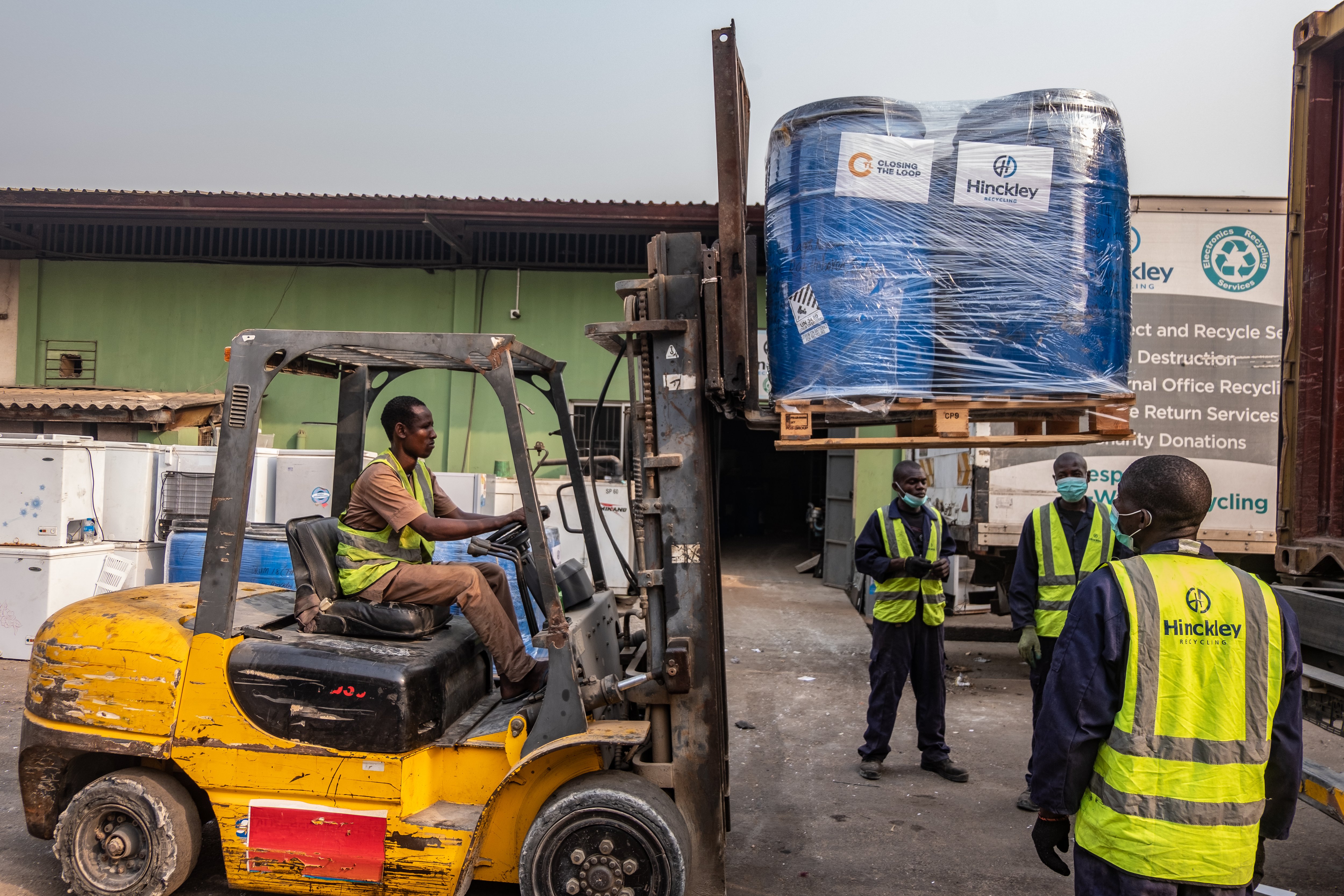The concept of Closing the Loop in itself is very simple. For every workplace device a customer buys, a corresponding amount of electronic waste is recycled – with a clear focus on Africa, where e-waste is a ubiquitous problem. In the pre-Corona year of 2019 alone, the world accumulated 53.6 million tons of old electronics or e-waste. That's an almost indescribably large number. And the annual amount of e-waste will continue to increase, as also stated by the Global E-Waste Monitor 2020. Those that suffer the most from this development are developing countries. When we found out about Closing the Loop, it was clear to us that we wanted to be a part of it. After all, if you read our blog regularly, you know that we are committed to the reduction of resource consumption.
Working post Corona
But let's start by looking back at the 2 past years. And boy, have they been busy. As a company that has arranged for its employees to work in flexible working models since the coronavirus crisis, we also needed to think about further technological equipment and electronics. As of 2021, we essentially operate using three working models: our employees are free to choose whether they want to work from home or in the office, with most choosing an in-between solution that allows them to hop very flexibly between home office and office.
People that work from home need powerful hardware and, for our flexible desks at our HQ in Nuremberg, we have created state-of-the-art workstations. In the coming months, we will also be upgrading the technology in our meeting rooms so that remote colleagues can quickly and easily join any meeting.
Reuse electronics: Closing the Loop in 7 steps
.jpg?width=5000&name=IMG_0913%20(1).jpg) But when you acquire new technology, you usually have to dispose of the old (repair and reuse are not part of the business processes within many corporations). But is that compatible with what we do and why we do it? Not really. This is because we want to help reduce humanity's consumption of resources, both with our products and in the way we work. Today, it is already possible to monitor resource consumption with Paessler PRTG and to reduce it by subsequently modifying various processes. All information about our company purpose can be found here:
But when you acquire new technology, you usually have to dispose of the old (repair and reuse are not part of the business processes within many corporations). But is that compatible with what we do and why we do it? Not really. This is because we want to help reduce humanity's consumption of resources, both with our products and in the way we work. Today, it is already possible to monitor resource consumption with Paessler PRTG and to reduce it by subsequently modifying various processes. All information about our company purpose can be found here:
Now, Closing the Loop has given us the opportunity to address the abovementioned dilemma. If you want to get to the root of how Closing the Loop works, you can break down all the relevant processes into 7 steps.
Here they are:
- A company buys various electronics as it does today. No need to change current purchasing, products, or vendors.
- Closing the Loop charges that company a specific fee per phone, tablet, or laptop.
- It then uses that fee to collect end-of-life electronics in African countries.
- Closing the Loop either ensures that the electronic waste is properly recycled locally or it ships the waste to certified recycling facilities.
- The reusable materials are not "lost" but are circulated back into manufacturing.
- Recycling this waste has compensated the new devices that the company purchased in the first step. This is what Closing the Loop calls "waste-neutral" and it works somewhat like the concept of CO₂-compensation.
- Oh, Closing the Loop also tells the story. Which is important so that many more companies participate and more e-waste is properly recycled.
Compensate for the old and the new
When we decided to get down to business on the issue of e-waste and to sign up for Closing the Loop, it was important for us to offset all the devices that we currently use. This meant laptops, monitors and, in some cases, cell phones for over 300 employees. Of course, this required a one-time compensation payment of a considerable amount but now we can look to the future with a cleaner conscience.
All work equipment that we buy for new colleagues is now automatically compensated. The process with Closing the Loop is automated to a large extent and is done directly through our hardware supplier. We pay the surcharge and do not have to deal with any bureaucratic matters.
Convenient, isn't it?

Would your IT team like to join the mission?
...then simply get in contact with the awesome folks at Closing the Loop and discover how great it feels to be part of a waste-neutral environment. Getting rid of old electronics, other devices, and hazardous waste like batteries was never easier. And it's possible to make a positive impact by doing so. Since we at Paessler joined in, we were able to reduce a good amount of e-waste, mostly old equipment and discarded devices.
We live in a professional world, where repair or reuse of old electronics is a matter of theory, not economically useful practice. Closing the Loop can change our handling of e-waste and old electronic materials.
Click on this visual from Closing the Loop that illustrates further details:
 Published by
Published by 














